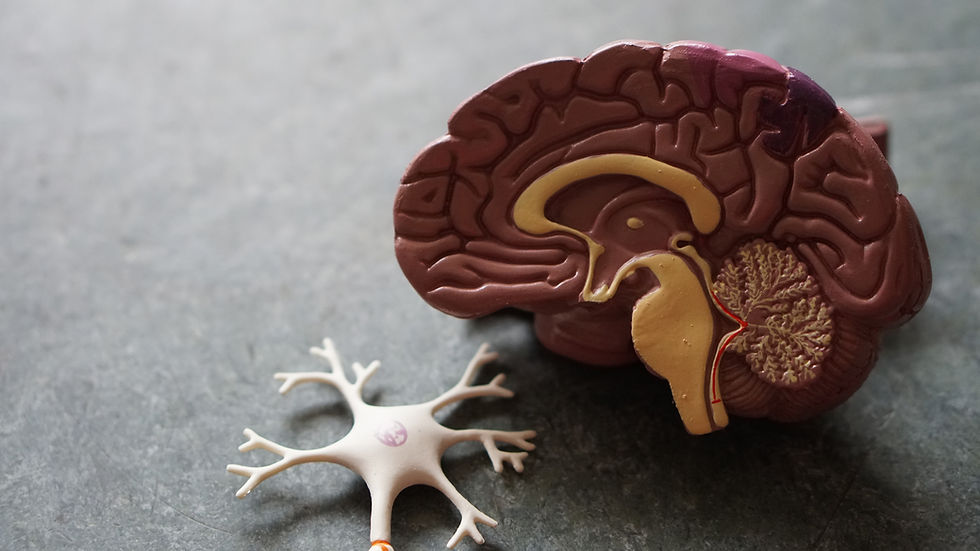The Liver and Its Function
- Malkiat Singh Duhra
- Aug 13, 2021
- 3 min read
The liver is an essential organ of our body that performs over 500 vital functions. These include removing waste products and foreign substances from the bloodstream, regulating blood sugar levels, and creating essential nutrients. It detoxifies various metabolites, synthesizes proteins, and produces biochemicals necessary for digestion and growth. It plays a role in metabolism, like the regulation of glycogen storage, decomposition of red blood cells, and the production of hormones. The liver is an accessory digestive organ that produces bile, an alkaline fluid containing cholesterol and bile acids which help the breakdown of fat. The gallbladder stores bile produced by the liver which is then moved to the small intestine to complete digestion. It also regulates a wide variety of high-volume biochemical reactions, including the synthesis and breakdown of small and complex molecules, many of which are necessary for normal vital functions.
The liver plays a major role in carbohydrate, protein, amino acid, and lipid metabolism. It synthesizes and stores around 100 g of glycogen. The liver is responsible for protein metabolism, synthesis as well as degradation. The liver plays several roles in lipid metabolism; cholesterol synthesis, lipogenesis, and the production of triglycerides, and the bulk of the body’s lipoproteins are synthesized in the liver. The liver produces and excretes bile required for emulsifying fats and helps the absorption of vitamin K from the diet. It produces insulin-like growth factor 1, a polypeptide protein hormone that plays an important role in childhood growth and continues to have anabolic effects in adults.
The liver helps in the breakdown of insulin, other hormones, bilirubin, waste products, medicinal products. It converts ammonia into urea. It works as a reservoir in times of excess blood volume and is capable of supplying extra blood in times of diminishing blood volume.
The liver stores a multitude of substances, including Vitamin A ( 1-2 year supply ), Vitamin D ( 1-4 months supply ), Vitamin B 12 ( 3-5 years supply ), Vitamin K, Vitamin E, iron, copper, zinc, cobalt, molybdenum, etc.
Other functions of the liver are the formation of blood cells RBC and WBC, purification of blood, acting as a sieve for antigens, produces albumin ( protein in blood serum ), synthesizes angiotensinogen, a hormone responsible for raising blood pressure, produces the enzyme catalase to breakdown hydrogen peroxide into water and oxygen. The liver filters all the blood in the body and breaks down poisonous substances such as alcohol and drugs. All the blood leaving the stomach and intestines passes through the liver, which removes toxins, byproducts, and other harmful products.
Maintaining a healthy liver
Drink alcohol moderately but it is better to avoid it. Excessive use of alcohol can cause damage to the liver.
Regular exercise will promote general health for every organ, including the liver.
Avoid illicit drugs: illicit drugs are toxins and the liver must filter them out. Taking these drugs can cause long-term damage.
Eat healthy foods: eating excessive fats can make it difficult for the liver to function properly and lead to fatty liver.
Vaccinate especially when traveling: get appropriate vaccinations against hepatitis A and B, as well as diseases such as malaria and yellow fever, which grow in the liver.
Symptoms of liver damage
Dark-colored urine, when bilirubin mixes with the urine.
Pale stools occur, when stercobilin, a brown pigment, is absent from the stools. Stercobilin is derived from bilirubin metabolites produced in the liver.
Yellow skin due to jaundice. Bilirubin deposits in the skin, causing an intense itch. Itching is the most common complaint by people who have liver failure. Often this itch can not be relieved by drugs.
Swelling of the abdomen, ankles and feet occurs because the liver fails to make albumin.
Excessive fatigue occurs due to the loss of nutrients, minerals, and vitamins.
Bruising and easy bleeding are other features of liver disease. The liver makes clotting factors, substances that help to prevent bleeding.
Pain in the upper right quadrant can result from the stretching of Glisson's capsule in conditions of hepatitis and pre-eclampsia.
Diagnosis
The diagnosis of liver disease is made by liver function blood test, ultrasound, CT scan, MRI, and liver biopsy. It is very important to consult your doctor periodically and regularly for the diagnosis of liver diseases.


Comments